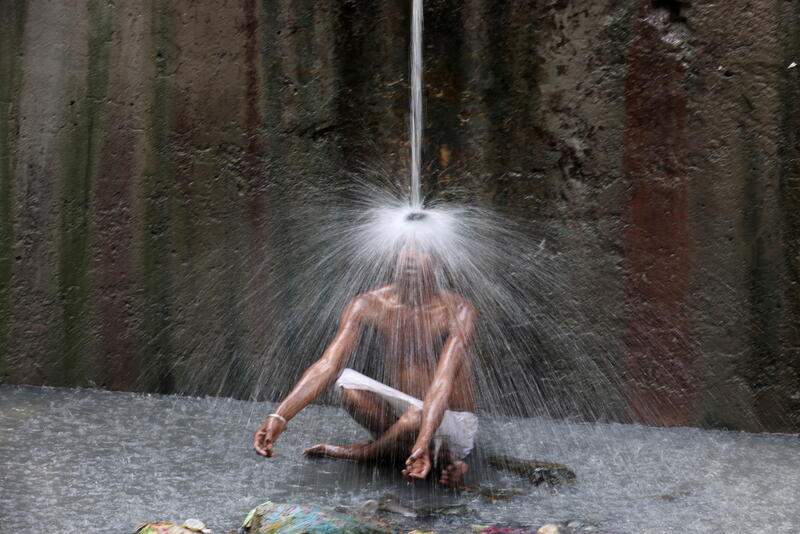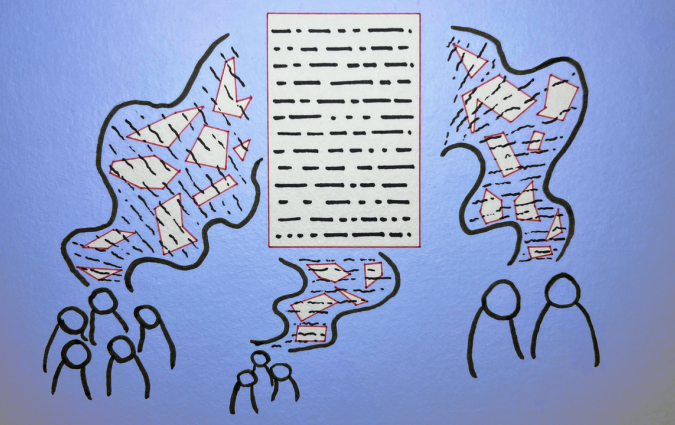To help journalists cover rising temperatures, newsrooms need to start with climate literacy

A man cools off under a pipe of flowing water on a hot summer day, in New Delhi, India in May 2022.
March 2022 was India’s hottest March on record. The heatwave that gripped the subcontinent that month saw some temperatures climb as high as eight degrees Celsius above the seasonal average, and the result was catastrophic. There was a huge death toll, wheat production was disrupted, and incomes were imperilled for farmers across the region.
Around the same time, in April 2022, a group of journalists, editors and fact checkers led by the Google News Initiative and DataLEADS, in partnership with the Science Journalists Association of India, set out to do something unique: design a climate change module to help Indian newsrooms address climate misinformation.
As a trainer for this workshop, the most common questions I heard from staff journalists in the subsequent sessions ranged from requests to explain the limit to a 1.5 degree Celsius rise in temperature enshrined in the Paris Agreement, to requests for local experts who could explain the impacts on the reporters’ own cities. Some were also unsure what the 1.5 degree Celsius limit meant—they asked whether the 1.5 degree temperature increase would happen every year.
I came away with a strong conclusion: there is a clear need for climate literacy in newsrooms. Without it, journalists cannot counter climate misinformation and disinformation, or provide good information to our audiences. Worse, without climate literacy, journalists risk spreading misinformation themselves, or promoting supposed “silver bullet” solutions that won’t truly address rising emissions or extreme heat.
We also realised that robust climate journalism goes beyond just getting the basic details right. Climate literacy means knowing what dots to connect across science, politics, and business, and avoiding drawing inaccurate conclusions when it comes to climate attribution and scientific accuracy.
The importance of this intersectional approach was never as clear as during the 2022 heatwave. Business journalists embraced the challenge of understanding the impact of the heat wave on the economy. For those reporting on human rights, the heatwave became central to stories on equity, justice and labour; for example, reporters covered how women were impacted by the heat wave, and the decline in productivity as a result. Many health journalists, too, covered the dangerous impacts on our health.
Specialised knowledge of climate change was already becoming increasingly integral to Indian newsrooms, particularly on science desks. Now, we had to put that literacy to work, and move news coverage beyond its traditional silos.
That demand has continued. This year, the heatwave has been nearly as bad as in 2022: high temperatures began in some parts of India in March, earlier than normal, and continued into June in some districts.
Those questions about how to connect the dots also don’t entirely go away, even with training. At the beginning of the year, in my then-newsroom Mongabay-India, I set out to report out a particularly interesting urban gardening story with a colleague, Mohit Rao. In the process of shaping the angle for the story, we asked ourselves: how much does urban gardening really contribute to climate mitigation?
We didn’t want to over-simplify or over-promise, even if urban gardens did play an important role in cooling cities. But just to answer this simple question, we felt we had to understand the basics of climate change, the evolving science, and the latest policies, so that we didn’t craft a misleading story. We ended up highlighting the benefits of urban and peri-urban farming beyond climate mitigation, which is critical for urban planning, including promoting individual and community well-being, increasing urban food security and creating green jobs.
Yet it is a hard reality of our newsrooms that we often don’t have the required time to educate ourselves when we need to. We’ve largely had to learn on the go when the topic of climate change comes up.
Veterans like myself, who encountered the rise of the discussion around climate change in global politics and diplomacy decades ago and now may even lead newsrooms, have a special role to play in laying the groundwork when a newsroom has to deliver under pressure.
All journalists need this strong foundation, but in the coming years, it will be even more pressing for young journalists. They will likely face plenty of online climate misinformation and disinformation, ever more speedily disseminated by new technologies. But most of all, they will be covering climate change while living through its long term impacts, too.
We need to enable journalists to keep pace with climate science and policy, see the bigger picture, and to offer the basic climate literacy training that we know makes such a difference to the quality of our work.






